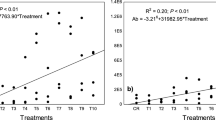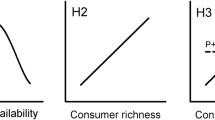Abstract
This study examines the relationship between cladoceran species richness and ecosystem functioning. I conducted an experiment in which four cladocerans, Daphnia. magna, D. longispina, D. pulex and Chydorus sphaericus, were cultured in microcosms using different species combinations and levels of species richness. The results demonstrate that even within this closely related group of organisms the effects on ecosystem-level variables, such as total algae and zooplankton biomass, per capita productivity, and nutrient concentrations, as well as phytoplankton community structure, were highly variable between different combinations of these species. Since only four species where involved in this study, species-specific effects dominated the general relationship between species richness and ecosystem functioning. Particular combinations of species resulted in effects that indicated more efficient grazing. These effects, which were most pronounced in combinations including both D. magna and C. sphaericus, were manifested as an indirect effect as the prey community shifted towards grazing-resistant species. As a result, the productivity of the prey community decreased, because phytoplankton species with lower per capita productivity became more dominant. I suggest that the primary mechanism that caused this significant effect was complementarity in prey-size use of D. magna and C. sphaericus. In terms of prey-size range, D. pulex and D. longispina were redundant when D. magna was present and were quickly out-competed by the latter despite higher per capita filtering efficiency. The results show that different mechanisms are important for different combinations of species. Furthermore, the ability of the prey community to respond to changes of consumer species composition is an important factor in experiments in which consumer species richness is experimentally manipulated.
Similar content being viewed by others
Author information
Authors and Affiliations
Additional information
Received: 2 November 1998 / Accepted: 8 September 1999
Rights and permissions
About this article
Cite this article
Norberg, J. Resource-niche complementarity and autotrophic compensation determines ecosystem-level responses to increased cladoceran species richness. Oecologia 122, 264–272 (2000). https://doi.org/10.1007/PL00008855
Issue Date:
DOI: https://doi.org/10.1007/PL00008855




